I hear the soft inquiring grunts of the cows as they talk to their calves, and the gentle grunt in return as the calf answers, “Here I am”.
~Wes Olson, in Portraits of the Bison
If there is an iconic animal of Yellowstone, it has to be the Bison. And spring is a great time to be with the Bison herds as they are full of rambunctious calves. The past couple of years have been good ones for birthing Bison calves, and, at times, there seem to be a hundred or more of these reddish brown bundles of energy stretched out across the sage flats and grasslands in Lamar Valley and Little America.
In every herd, there are young calves following their mothers, or playing with one another, or sacked out in the grass, seemingly exhausted. After a gestation of about nine months, a cow gives birth in May or June. Newborn Bison weigh 30-50 pounds and are a distinctive reddish-brown color for the first few months of their life.
Their color can vary from reddish-brown to an almost orange-red, depending on the light. Though you often see pairs of calves cavorting, twins are very rare, and these are usually just singles wandering away from their moms for some fun.
When not nursing or sleeping, Bison calves are very energetic and curious, and engage in all sorts of running around and play. I watched a couple of them head-butting and shoving each other for several minutes one afternoon, apparently practicing for their more serious bouts when they reach adulthood.
Ironically, there were a couple of young adult Bison engaged in a more aggressive-looking match not far away.
We kept seeing calves that looked like they had been born just a few hours earlier, so we were really hoping to witness a birth. While that eluded us, we did get to see one that had just been born, and was probably taking its first steps.
Driving through Lamar Valley, I saw a cow that was separated from the herd on a hillside. Next to her was a reddish blob on the ground, a tiny calf. The cow finally got up and coaxed the calf to its feet. Bison calves are able to stand about a half hour after being born, so we just missed it. The calf was wobbly, and remnants of the umbilical cord were visible, as was some placental material still hanging from the cow.
As we watched, the cow licked and encouraged the calf. After ten or fifteen minutes, she gradually walked slowly away, the tiny calf teetering along beside her as she went down the slope to rejoin the safety of the herd. Most Bison babies are able to run and keep up with the herd within an hour or two after birth.
I admit to having to stop every time I pass a herd where the calves are up and about. Their antics are so much fun to watch and when the light is right, they are so beautiful against the lush green grasses of Lamar and Little America. What’s not to like about these babies? And in a few years, they will be part of the iconic herds of the largest land mammals in North America. And thanks to the foresight of some conservation-minded people almost 150 years ago, they still roam in Yellowstone for all to enjoy, and to feel awe in their presence.

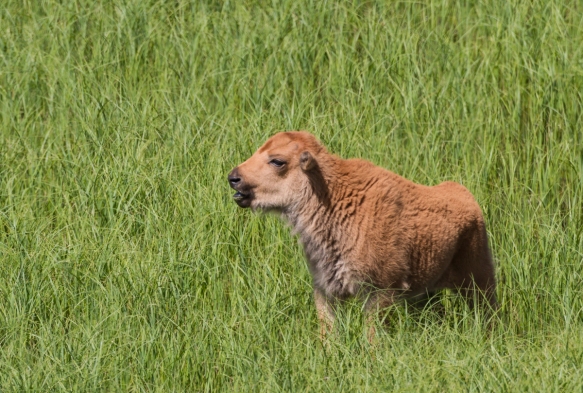


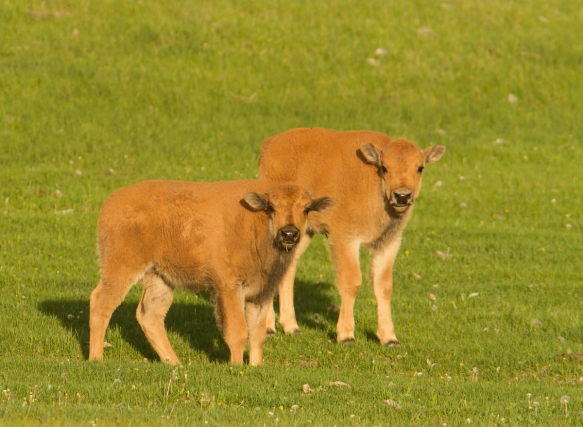



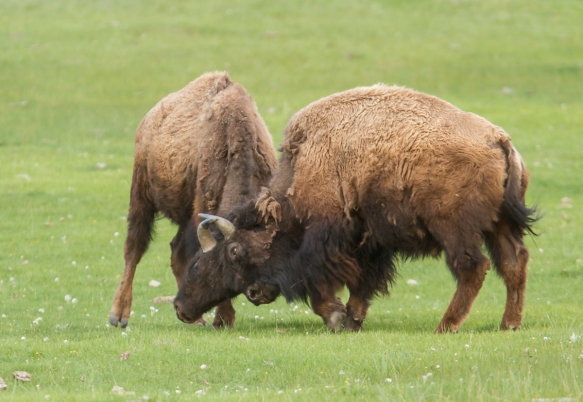




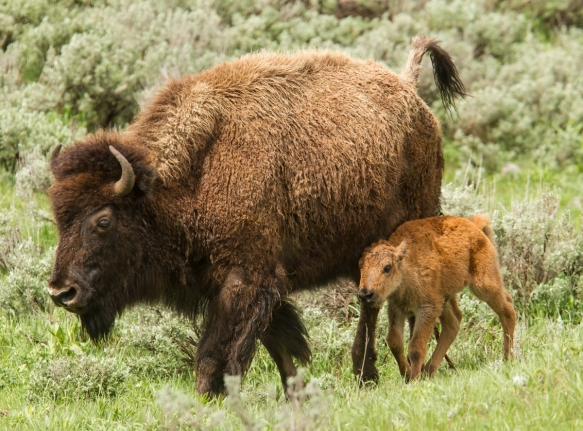
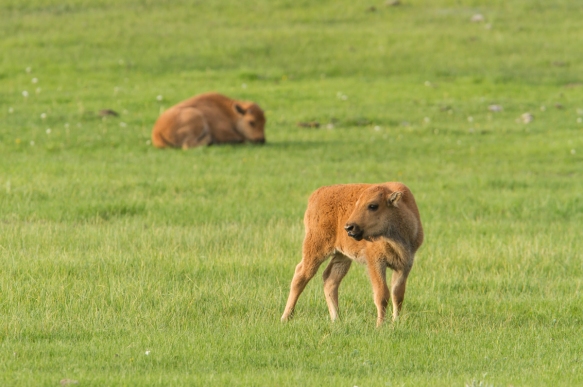
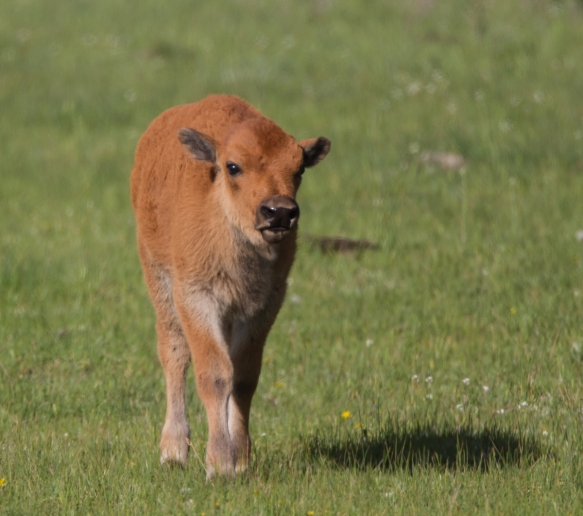
Thanks for sharing your pictures